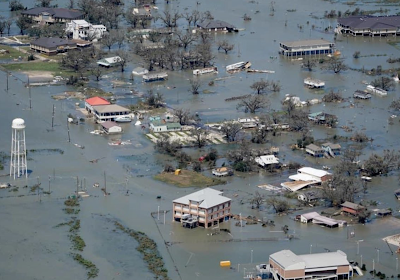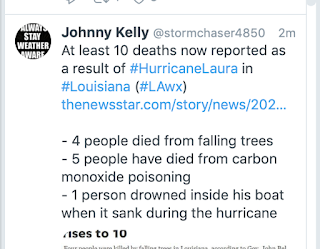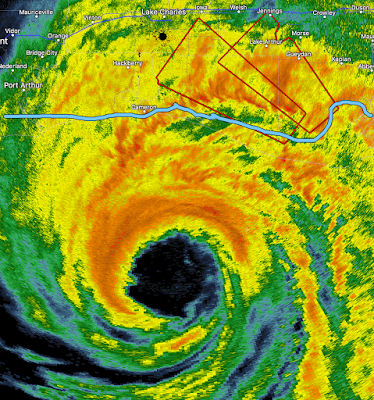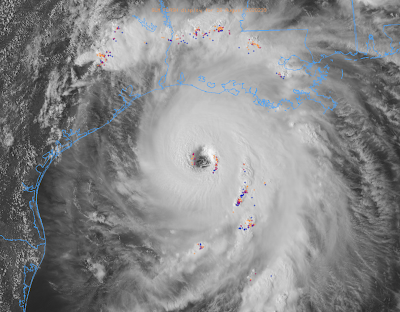Update From Southwest Louisiana

As meteorologists predicted it would be, Hurricane Laura was absolutely devastating. Please donate to the Salvation Army's Hurricane Laura recovery fund or of another reputable charity (note: I do not include the Red Cross). There is a myth that office buildings are safe in hurricane and tornado-force winds. That certainly isn't true as the above photo (Capital One high-rise) and the photo below (KPLC TV studio) demonstrate. I would also like to direct you to my comments pertaining to the numerous people on social media and in the MSM that were calling Laura a "false alarm" the day after. Those comments ar e here . Addition: The much-maligned storm surge forecasts were correct.










